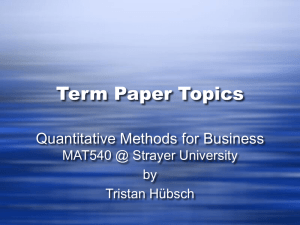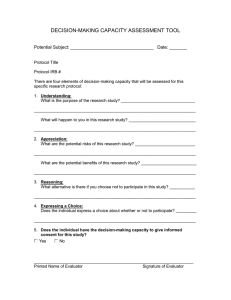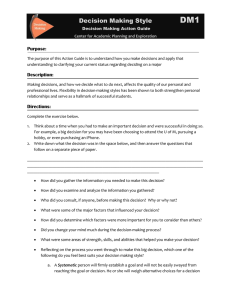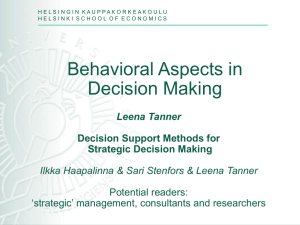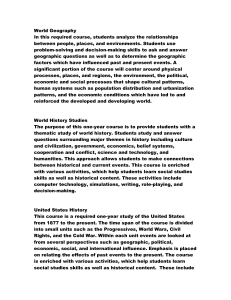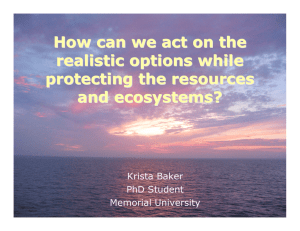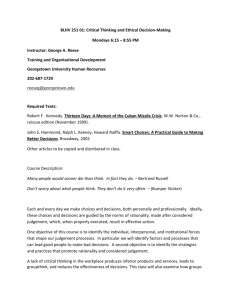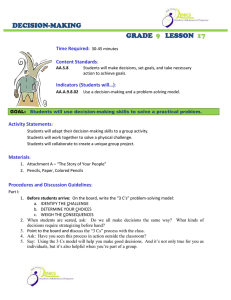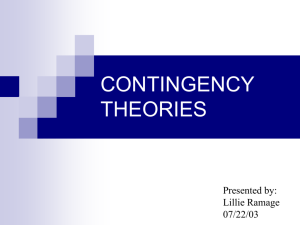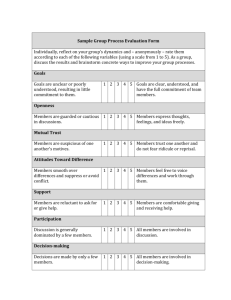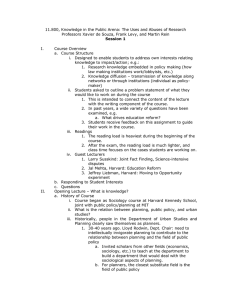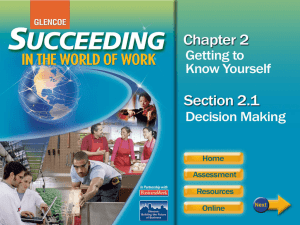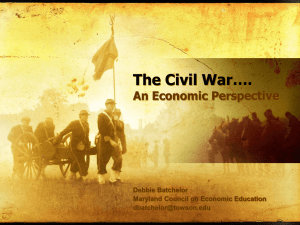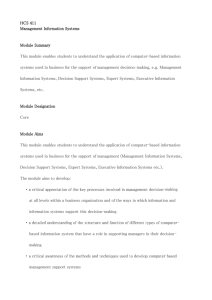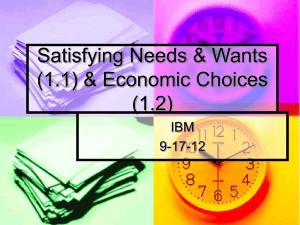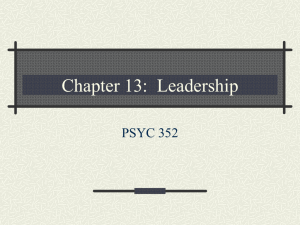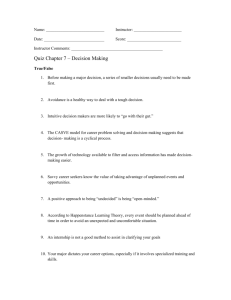Review for Final - Cleveland State University
advertisement
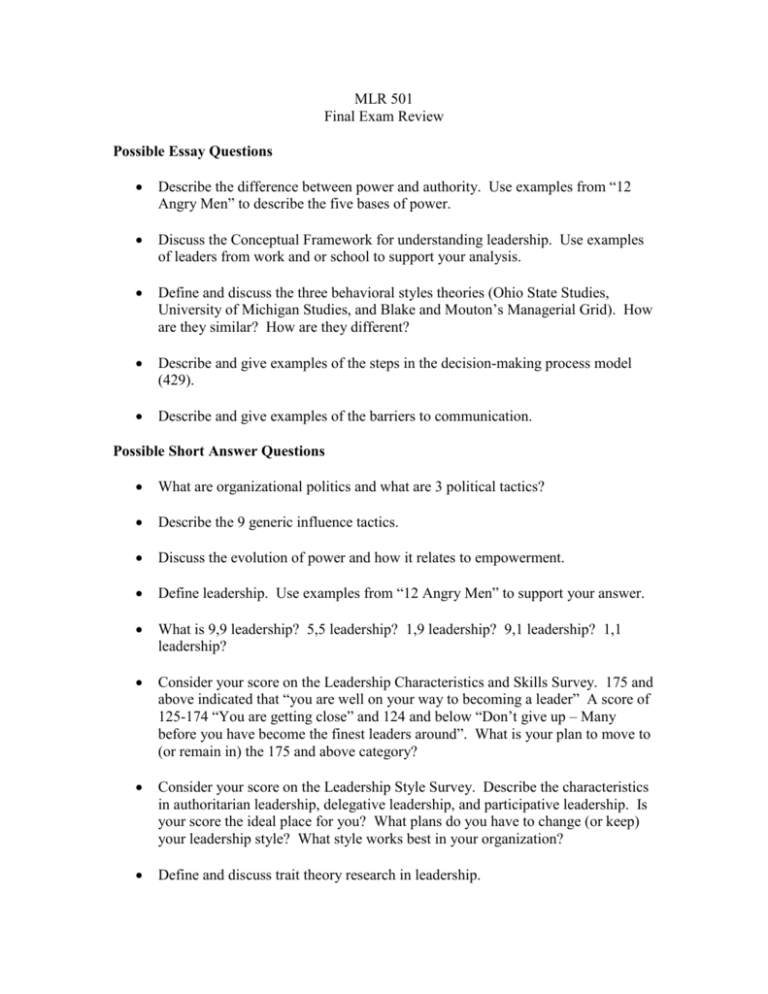
MLR 501 Final Exam Review Possible Essay Questions Describe the difference between power and authority. Use examples from “12 Angry Men” to describe the five bases of power. Discuss the Conceptual Framework for understanding leadership. Use examples of leaders from work and or school to support your analysis. Define and discuss the three behavioral styles theories (Ohio State Studies, University of Michigan Studies, and Blake and Mouton’s Managerial Grid). How are they similar? How are they different? Describe and give examples of the steps in the decision-making process model (429). Describe and give examples of the barriers to communication. Possible Short Answer Questions What are organizational politics and what are 3 political tactics? Describe the 9 generic influence tactics. Discuss the evolution of power and how it relates to empowerment. Define leadership. Use examples from “12 Angry Men” to support your answer. What is 9,9 leadership? 5,5 leadership? 1,9 leadership? 9,1 leadership? 1,1 leadership? Consider your score on the Leadership Characteristics and Skills Survey. 175 and above indicated that “you are well on your way to becoming a leader” A score of 125-174 “You are getting close” and 124 and below “Don’t give up – Many before you have become the finest leaders around”. What is your plan to move to (or remain in) the 175 and above category? Consider your score on the Leadership Style Survey. Describe the characteristics in authoritarian leadership, delegative leadership, and participative leadership. Is your score the ideal place for you? What plans do you have to change (or keep) your leadership style? What style works best in your organization? Define and discuss trait theory research in leadership. Possible Short Answer Questions Discuss one situational differences leadership style (LMX, Path-Goal, Fiedler Contingency Model, Hersey and Blanchard). Depending on the model you choose, how does it work, what has research indicated, and how can you apply the model to your work/school environment? Describe the differences between Charismatic Leadership and Transactional Leadership Describe the Contemporary Model of Communication proposed by Shannon and Weaver. Give examples of each stage. What is the Johari Window? What dimensions are involved? Why is it an important communication model? How can we improve organizational communication? Describe the two types of decisions Compare and contrast the three models of decision-making (rational, bounded rationality and garbage can) Why are values, heuristics, personality, and risk important factors in behavioral decision-making? What is the nominal group technique and why is it effective for group problem solving techniques? Why do change efforts fail? What is a change agent? Why is a change agent important to managing organizational change and development?
